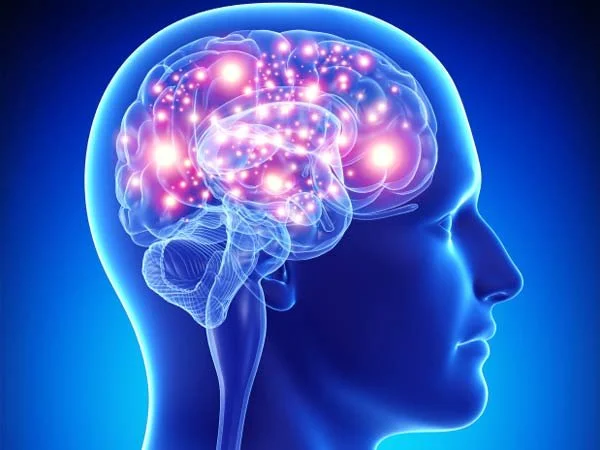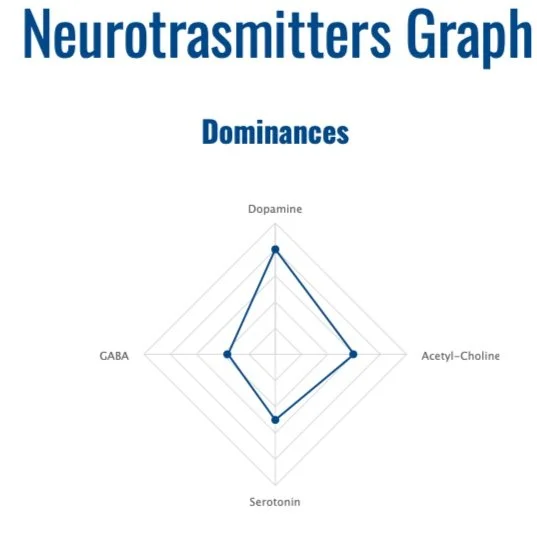Neurotransmitter-Based Program Design
Tailoring Training to True Individuality
We are all unique, with distinct physiology and psychology influencing our behavior, social preferences, learning styles, and even our motivation and food choices. Despite acknowledging this diversity in many aspects of life, when designing a training program, there's often an expectation for everyone to train and react to training in the same way.
Your physiological and psychological characteristics, personal preferences, motivation, cognitive functions, and motor abilities are shaped by a combination of environmental influences, life experiences, and genetic factors, all of which manifest in your distinctive neurotransmitter profile, which is the greatest determining factor of your unique physiology and psychology.
What is the neurotransmitter profile?
Neurotransmitters are brain chemicals that facilitate the transmission of signals between nerve cells throughout the body. They regulate various physiological processes, influencing aspects such as memory, focus, mood, motor contraction, and motivation. The relative dominance and deficiency of each neurotransmitter vary among individuals, forming your unique neurotransmitter profile, which not only dictates how you behave but also how you respond to training.
The main neurotransmitters are Dopamine, Acetylcholine, GABA, and Serotonin. The first two are excitatory, responsible for drive, motivation, muscular contraction, and attention span. The other two are inhibitory, fostering calmness, mindfulness, positive mood, and sleep. Due to your nature and nurture, some are more dominant or deficient than others, impacting your levels of motivation, mood, anxiety, cognitive performance, well-being, and physical performance. Understanding your neurotransmitter profile allows you to comprehend your body, its needs, and how to stimulate it for better performance, inside and outside of the gym.
History of Neurotransmitter Profile Training Design
The concept of considering individual characteristics when designing a training program was pioneered by Dr. Anatoliy Bondarchuk. Bondarchuk was a Ukrainian Olympic champion and world record holder in hammer throw as well as the USSR national team coach from 1976 to 1992. Bondarchuk classified athletes into groups based on their response to intensity, volume, and exercise variation. This idea was later popularized in the West by Canadian strength coach Charles Poliquin, who used neurotype assessment to categorize athletes into five groups representing different neurotransmitter archetypes.
Understanding the Main Neurotransmitter Archetypes
According to Charles Poliquin's ideology, there are five main neurotransmitter archetypes, each categorized using elements from traditional Chinese medicine. These archetypes are represented by the elements of fire, wood, earth, metal, and water.
Fire Archetype: Individuals sensitive to dopamine, the neurotransmitter associated with pleasure, fall into the fire archetype. These individuals are drawn to intensity, excitement, and challenges. A prototypical example of the fire archetype would be someone like Mike Tyson or Louie Simmons.
Wood Archetype: This archetype is characterized by a sensitivity to Acetylcholine, responsible for attention span and muscular contraction. People sensitive to Acetylcholine are typically organized, laid back, and tend to overthink.
Earth Archetype: Representing a balanced neurotype, the earth archetype shows no major inclination towards any specific neurotransmitter. Individuals of this type often respond well to high training volumes and excel as bodybuilders.
Metal and Water Archetypes: Individuals sensitive to GABA and serotonin fall into the metal and water archetypes. These individuals are typically calm, and quiet, and may not frequent the gym as often as others.
Understanding these neurotransmitter archetypes provides insights into individual tendencies, preferences, and reactions to various stimuli, allowing for a more personalized approach to training, nutrition, supplementation, and well-being.
How I Apply Neurotransmitter Assessment in My Training
When assessed by my mentor, Carlos Castro, I was classified as highly dopamine-dominant. Being dopamine dominant, I thrive on frequently changing programs to avoid boredom. My training requires high intensity to trigger dopamine production. However, I must be cautious with training volume, as excessive volume can lead to overtraining and a lack of motivation the next day due to dopamine withdrawal. I perform well on diets rich in animal protein and tyrosine, the main raw materials for dopamine production.
Below is part of my current training schedule: a maximal strength program designed to address my weak links—my upper back, shoulders, and quads.
Upper body A
A. High incline close grip bench press, 8 sets of 4 repetitions.
A. Close grip neutral chin-ups, 8 sets of 3 repetitions.
B. Dumbbell bench press, 4 sets of 8 repetitions.
B. Dumbbell row with a pronated grip and elbow rotated outside, 4 sets of 8 repetitions.
C. Abducted external rotation on a pulley cable machine, 2 sets of 12 repetitions.
Lower body A
A. High bar back squats, 8 sets of 4 repetitions.
B. Squat from the pins, mid position, 6 sets of 5 repetitions.
Upper body B
A. Dips, 8 sets of 4 repetitions.
A. Wall-supported biceps curls, 8 sets of 4 repetitions.
B. Neutral grip shoulder press, 4 sets of 8 repetitions.
B. High incline neutral grip dumbbell curls, 4 sets of 4 repetitions.
C. Adducted external rotation on pulley cable machine, 2 sets of 12 repetitions.
Lower body B
A. Conventional deadlift, 8 sets of 4 repetitions.
B. Front squats, 5 sets of 6 repetitions.

